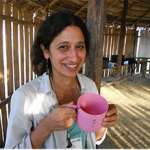People have been using fire for pastoralism in the Highlands and Islands of Scotland for thousands of years, though the way has been done has changed in different economic, social and political conditions. Before the Highland Clearances, burning (known in Scotland as muirburn, or falasgair in Scot’s Gaelic), on a small-scale, was involved in maintaining communal pastures for a variety of livestock. After the clearances, fire was used more widely to manage landscapes for sheep, and new uses of fire related to grouse shooting emerged. Today, crofters (small-scale farmers, largely managing rough hill grazings for sheep and cattle) are one group using fire to maintain what are largely common grazing areas.
There is heated political debate over the use of fire in landscape management in twenty-first century Scotland, especially in the context of peatlands. In response to calls for tighter regulation of grouse estate management, new legislation, the Wildlife Management and Muirburn (Scotland) Bill, is being drafted in Parliament, which will, among other things, tighten regulatory control over burning. While the Bill is being designed with grouse moor management in mind, it will also affect crofters. The crofting population has not been vocal in national debates over fire, and crofting fire use has been little researched.
In this context, this research project aims to explore how fire and crofting are related, highlighting perspectives that are commonly missing from national debate. It looks at how and why crofters use fire, how fire knowledge is gained and passed on by crofters, how fire use has changed in living memory, how changes to the muirburn legislation might affect crofters’ fire use, and with what implications for small-scale agriculture and wildfire risk.
Project duration: 2023-2026

Photo: left – recently burned, with fresh growth; right – not recently burned , with dense heather. Location: Skye, Source: C. Smith







